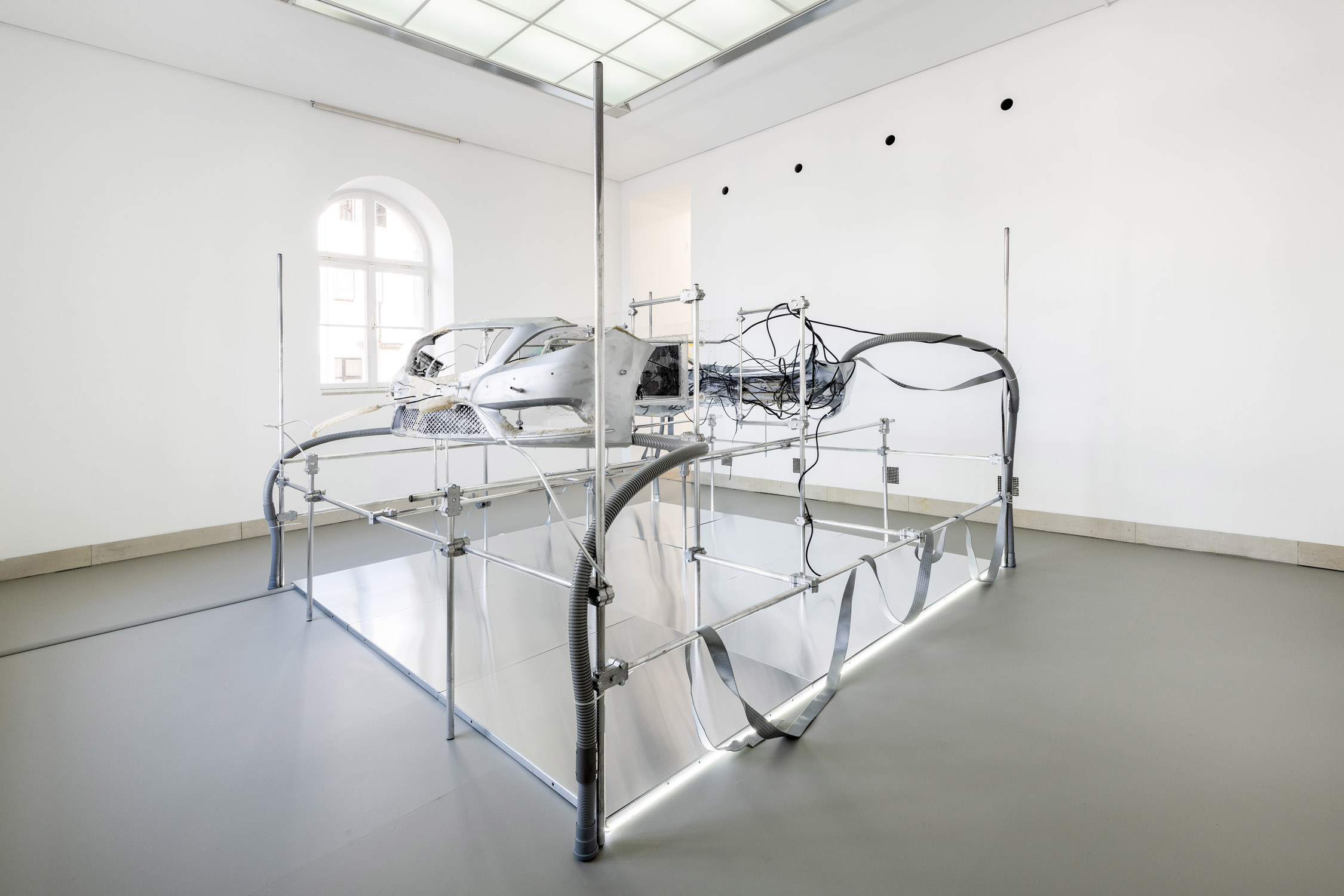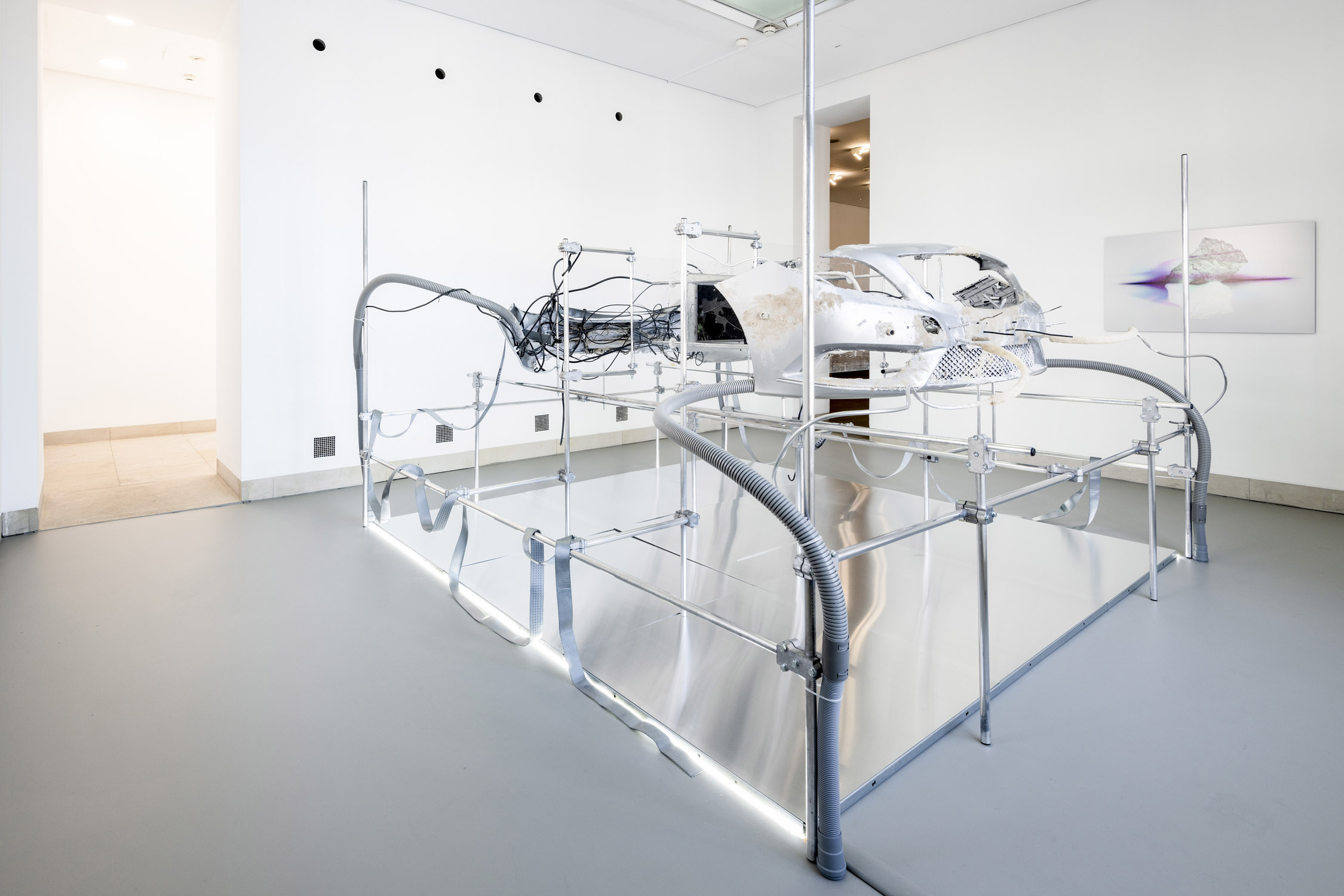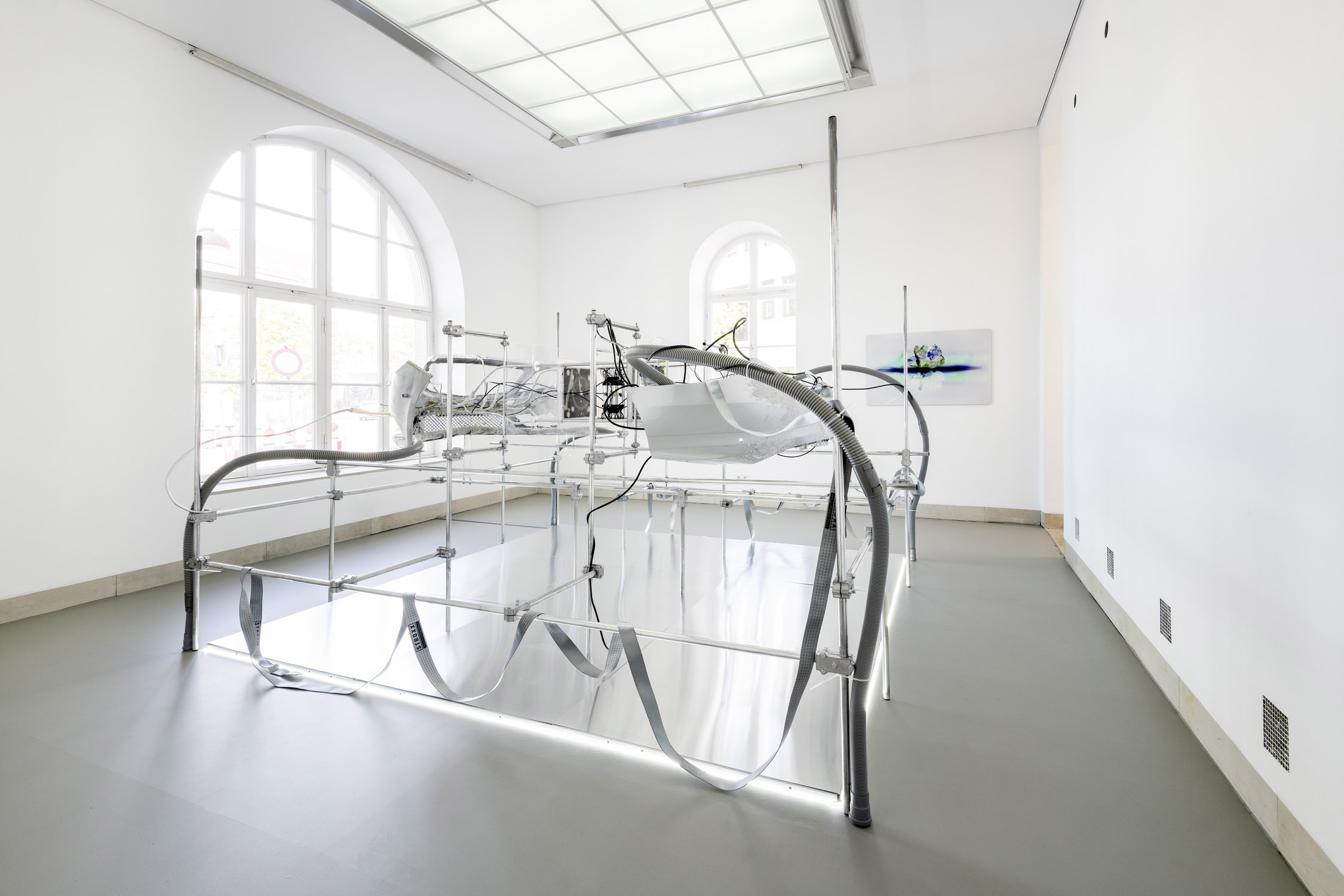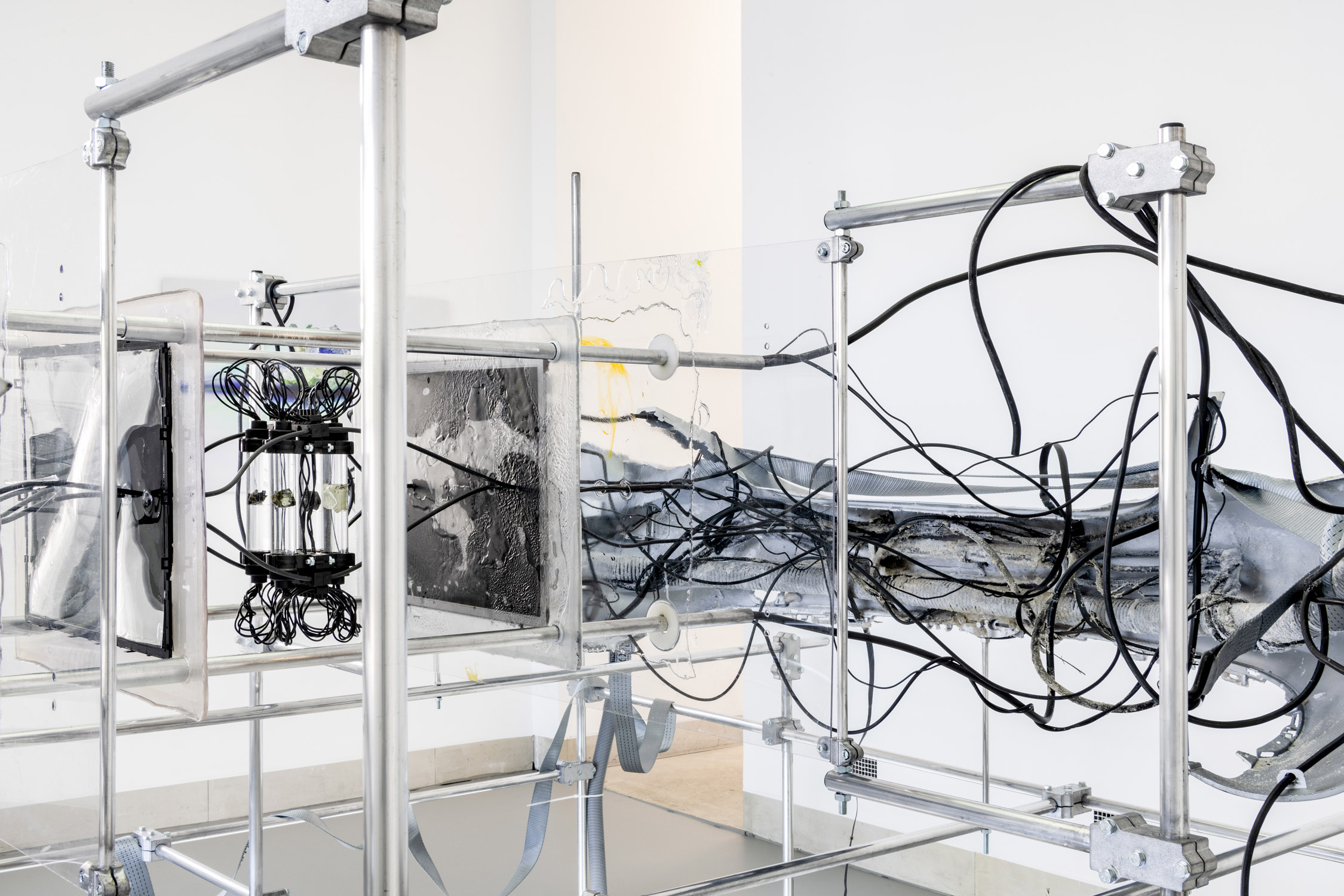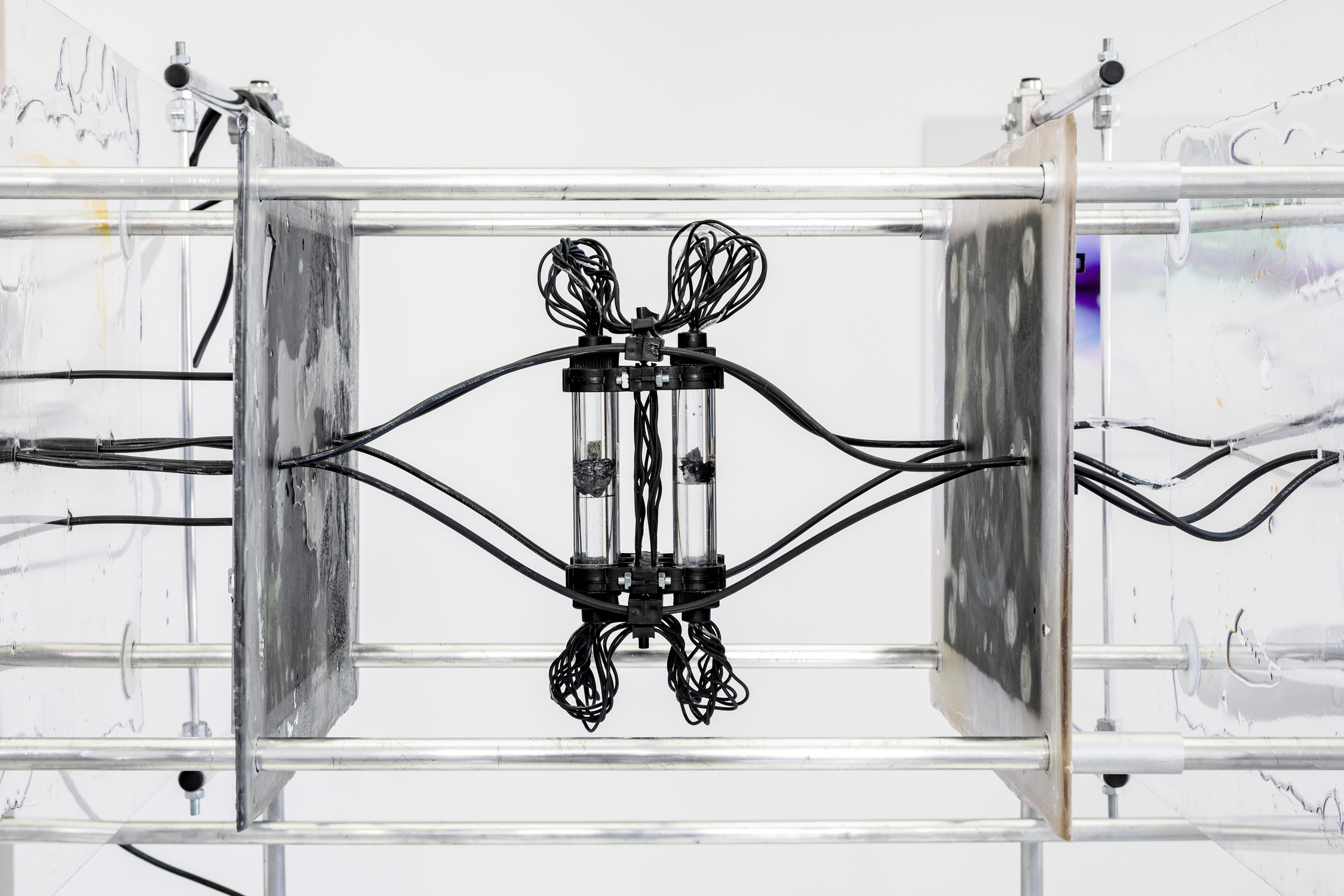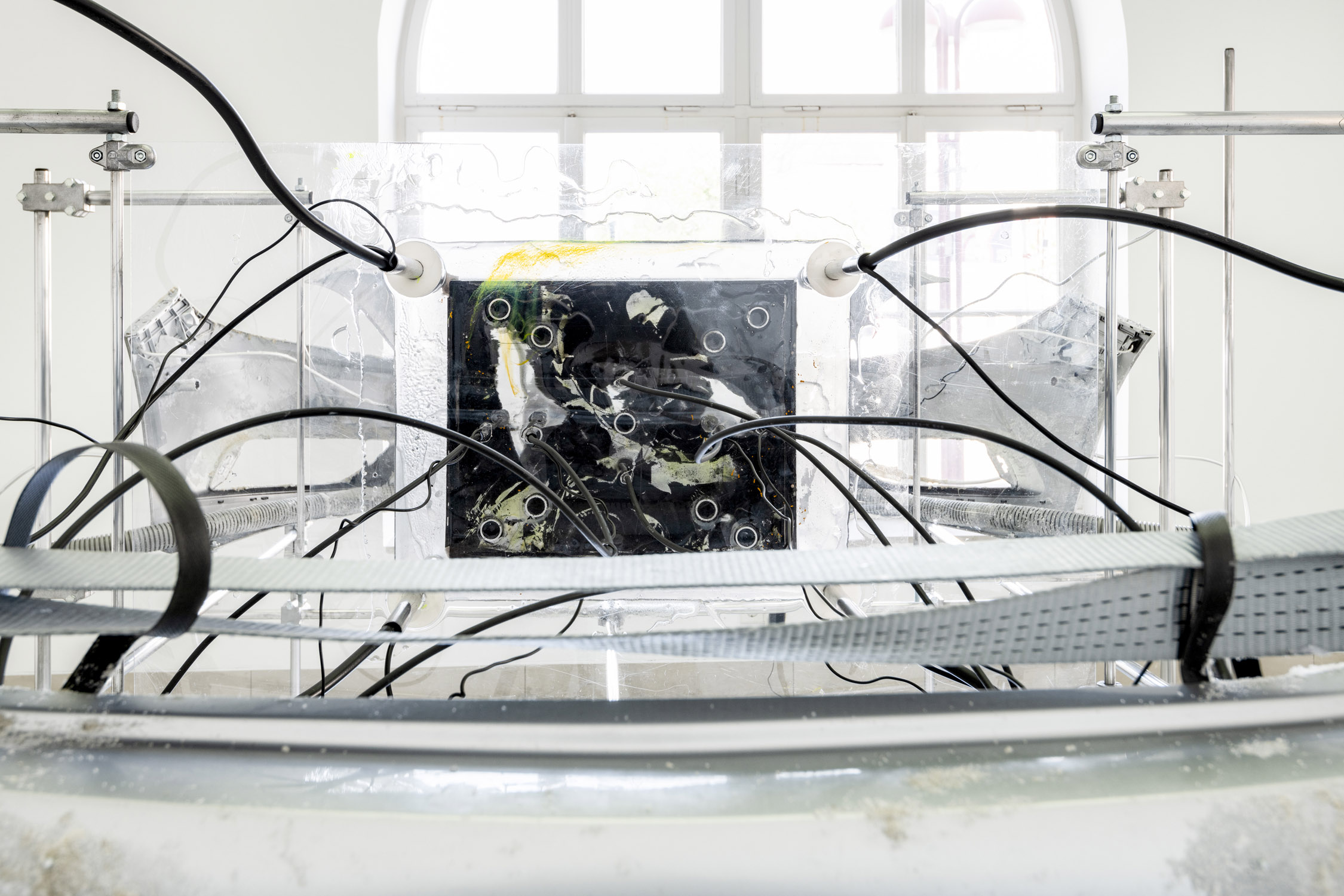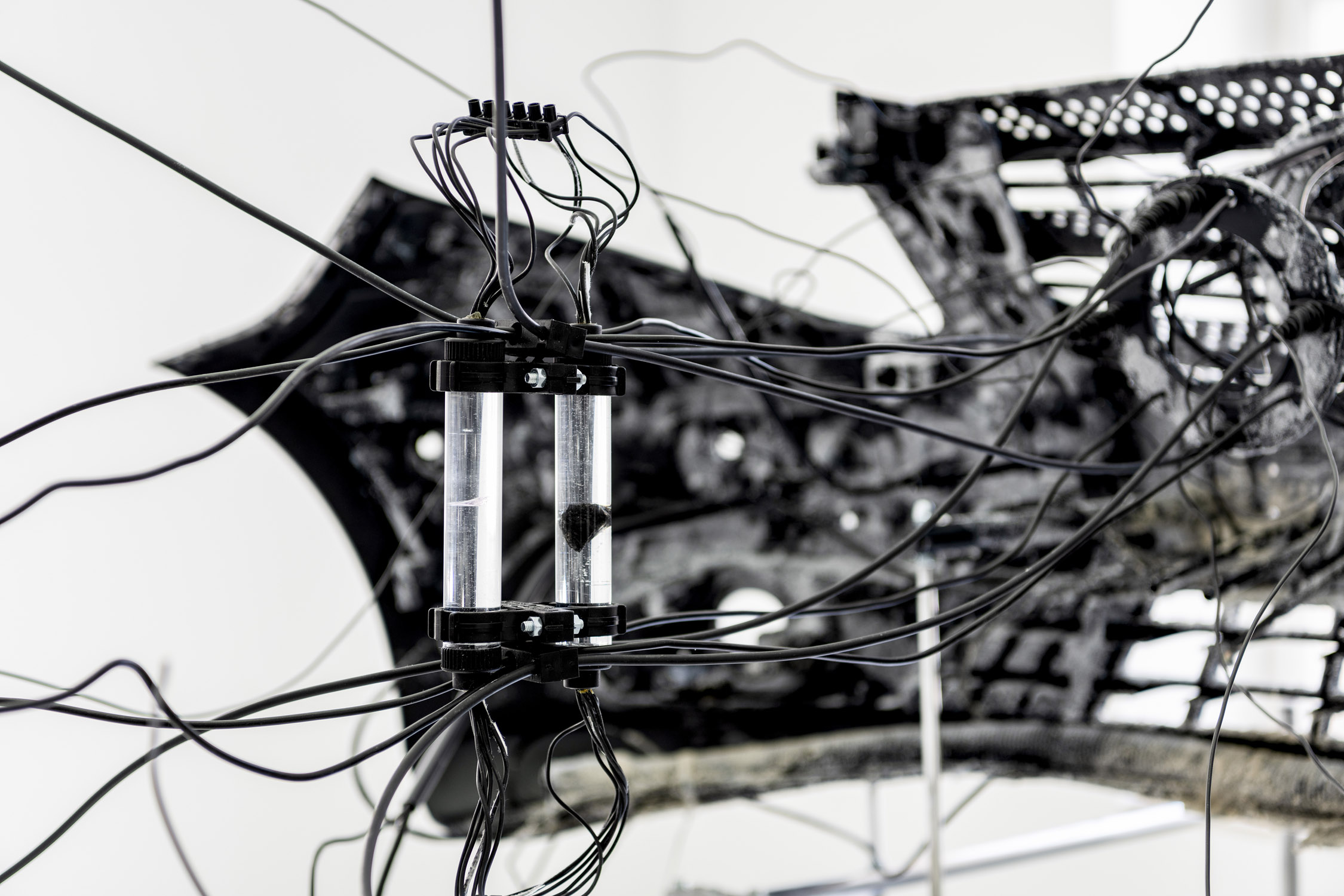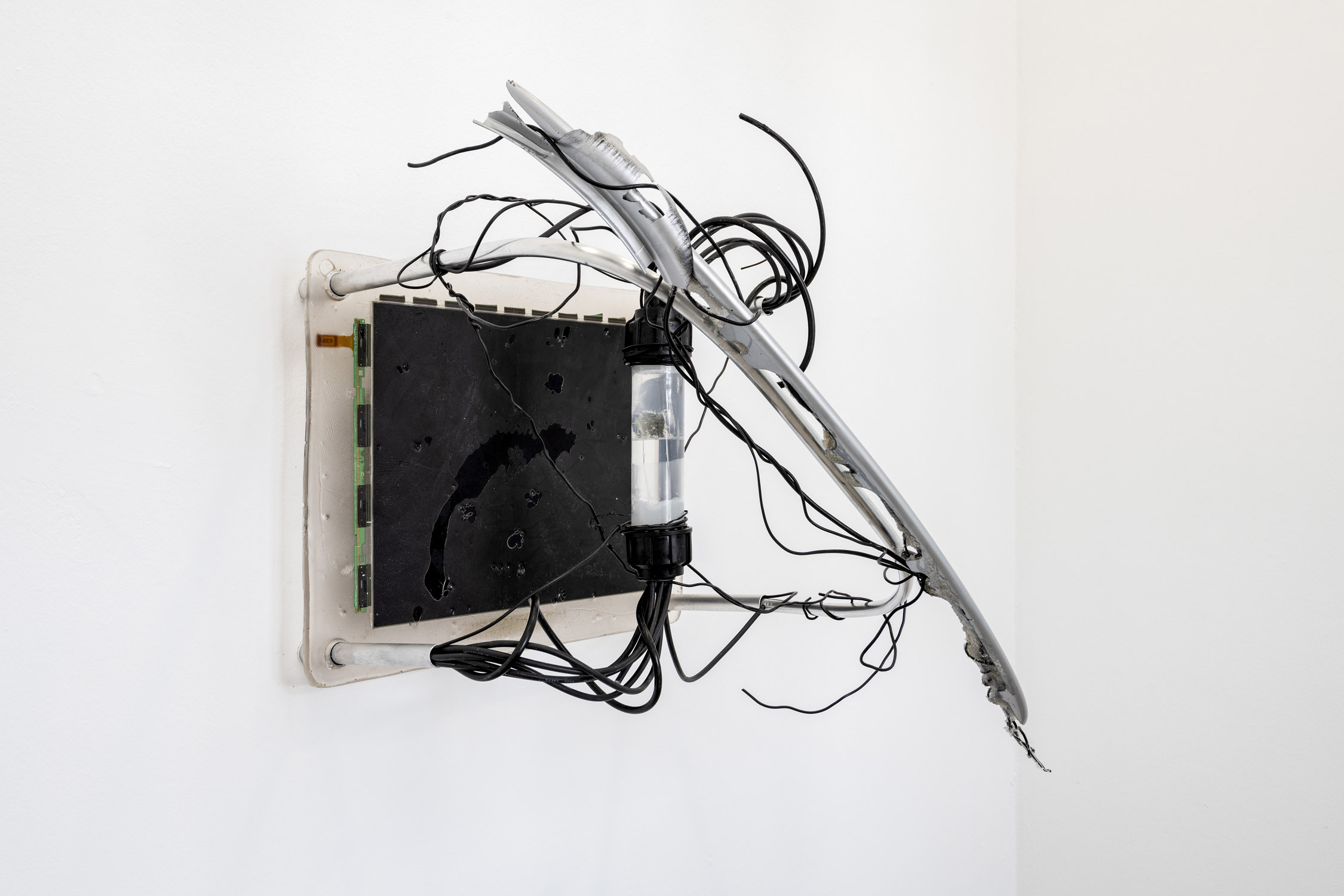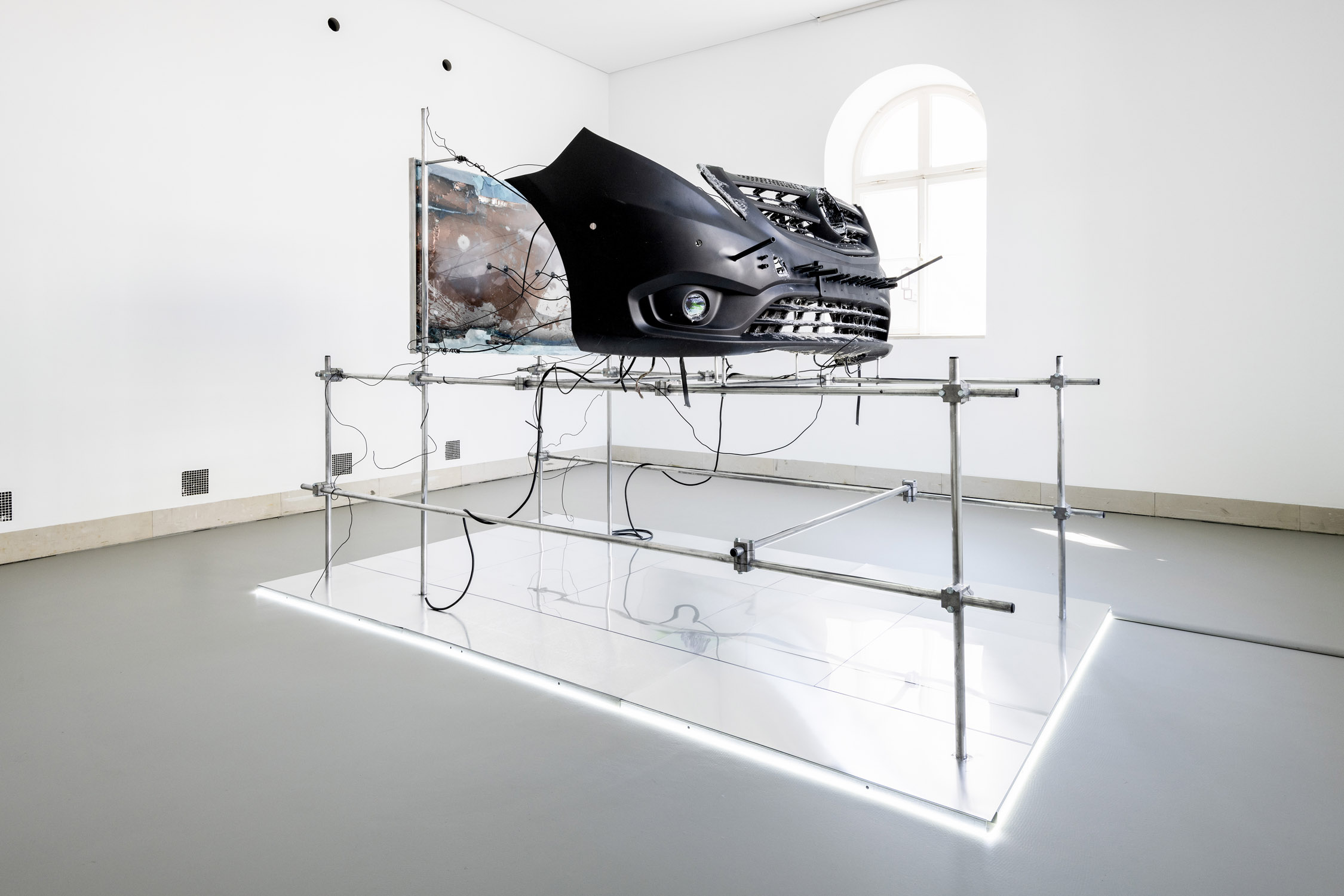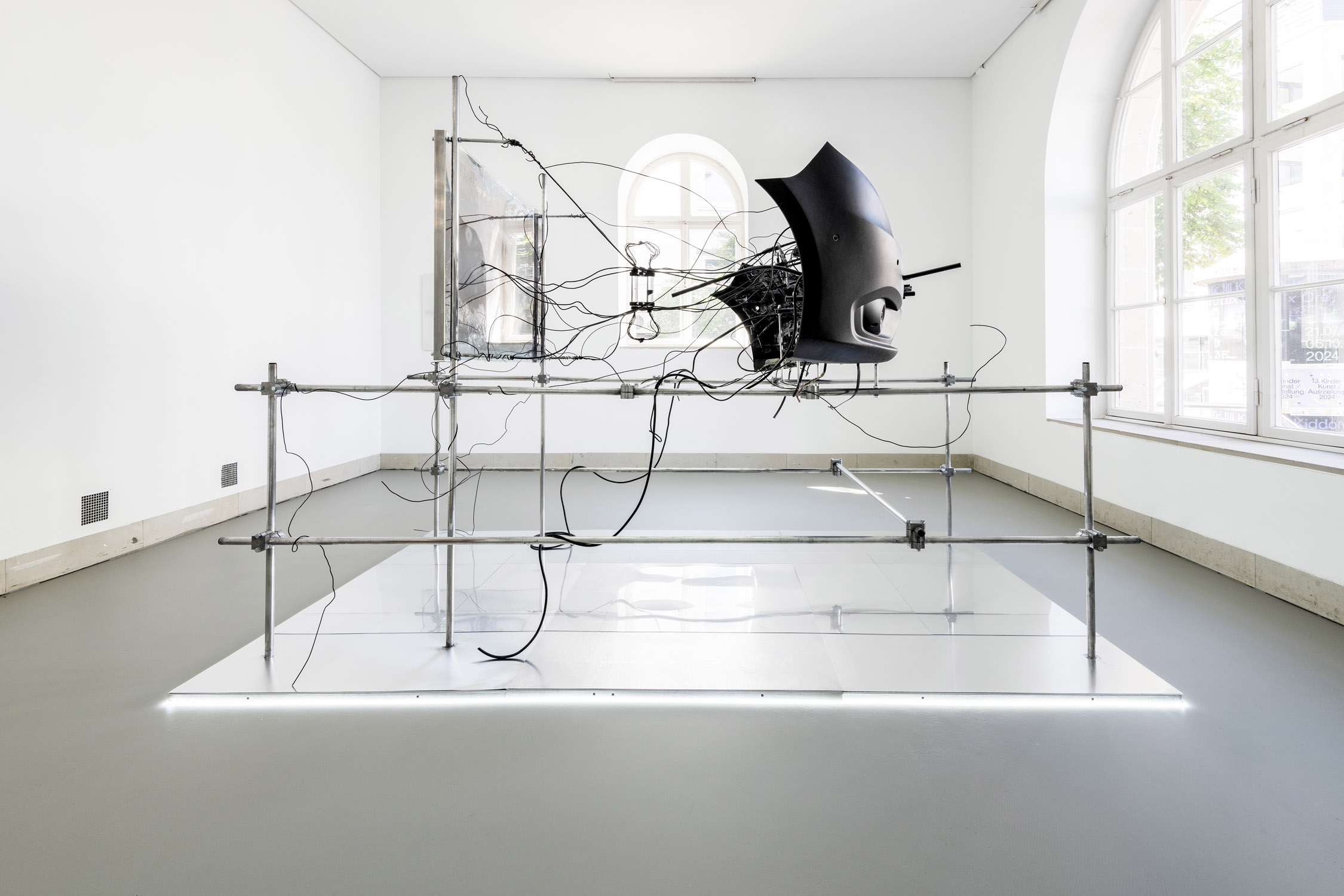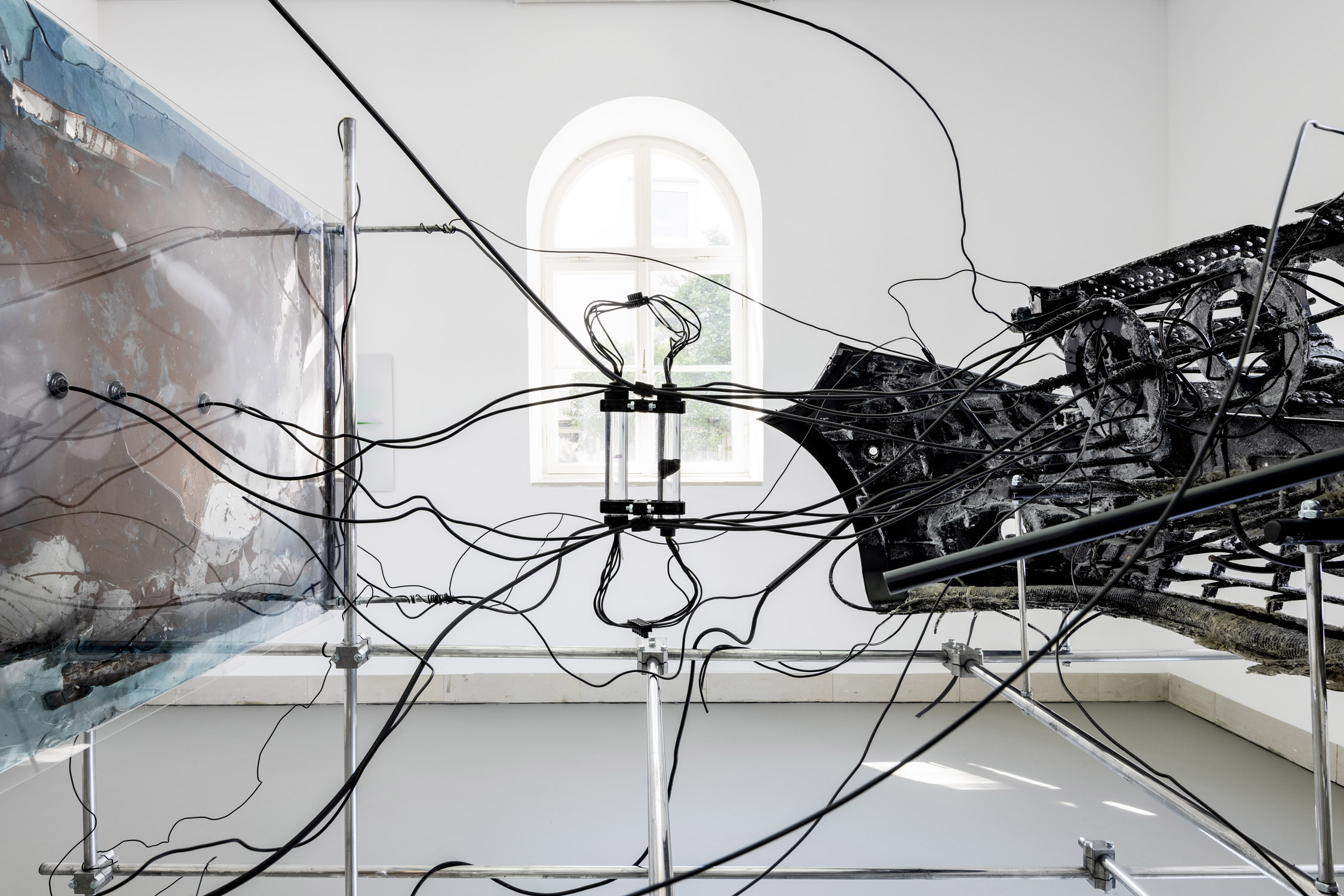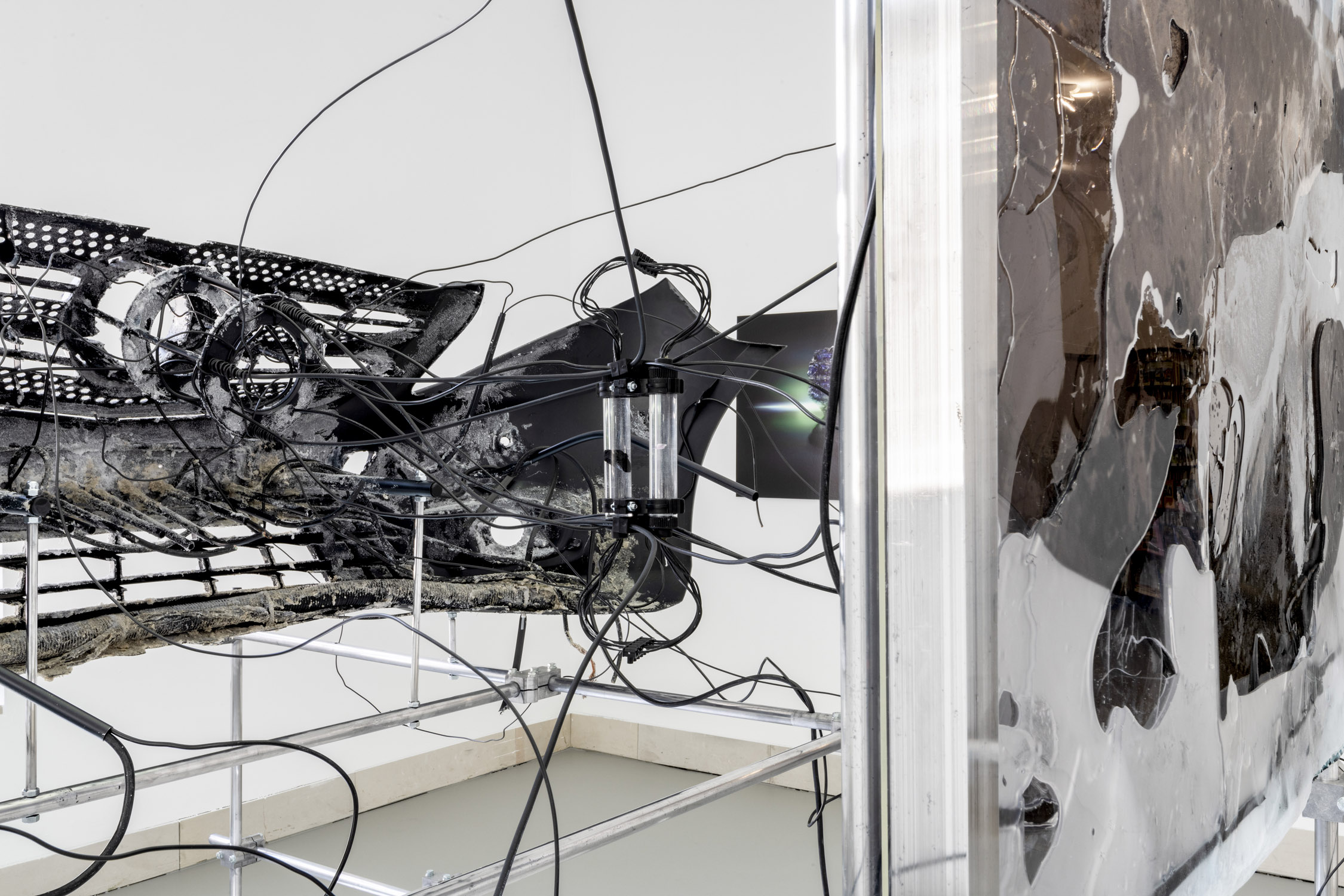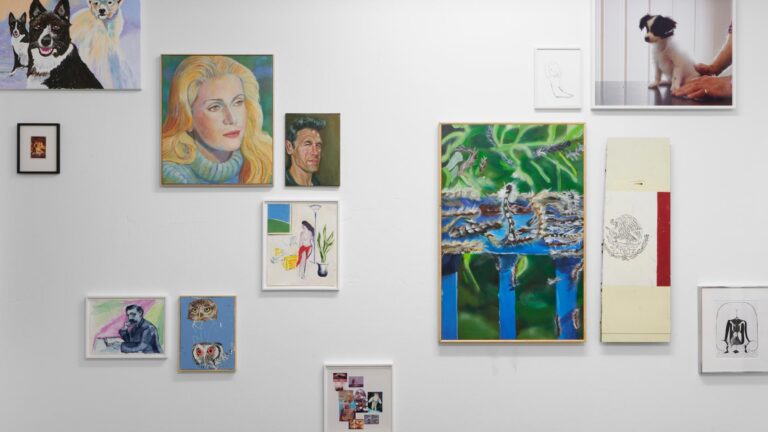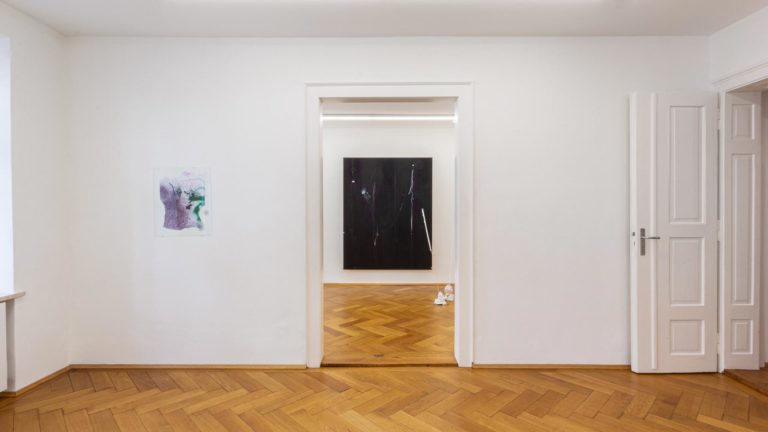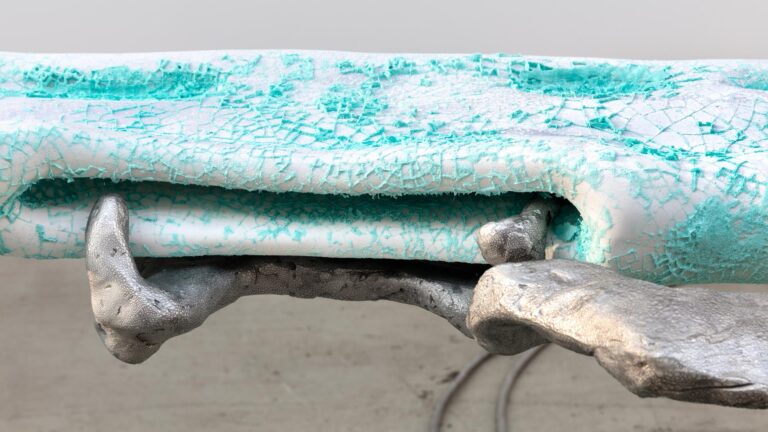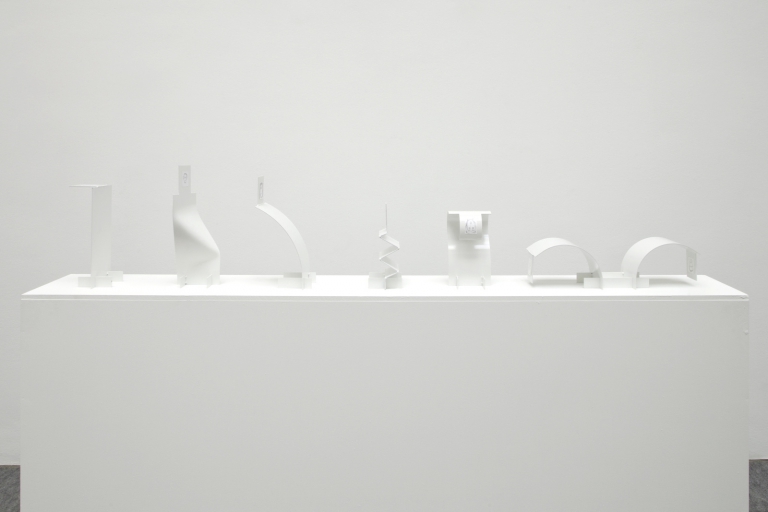Jill Kiddon’s sculptures and expansive installations seem like relics of our present, uniting in their materiality not only the duality of man and nature, but also that of creation and destruction. These dualities become tangible through materials as diverse as aluminum, concrete and earth, plastic, cables, discarded clothing or dried flowers. Kiddon creates complex constructions that she often keeps in a fragile balance. Like an archaeologist, she tracks down the traces of our time, casts them in different materials, combines or alienates them and thus forms poetic bodies to which we relate our own existence.
For her exhibition Lux Ore, Jill Kiddon has developed two interrelated installations that take the closely interwoven relationship between natural resources and technological progress as their starting point, questioning both our dependence on energy and our insatiable hunger for it.
The works are an expression of Kiddon’s interest in the material nature of so-called critical metals – the indispensable raw materials of this progress – and their key function in the production of energy storages.
As part of the energy transition, the demand for critical metals continues to increase. Lithium in particular, but also manganese, nickel, cobalt and graphite, are essential for the batteries of electric vehicles and for storing electricity from renewable energies. While global demand has never been as high as it is now and is likely to rise in the coming years, mineral resources on our planet are finite and their extraction is associated with serious environmental and social problems as well.
Using the example of the battery of an electric car, Jill Kiddon reflects on the seemingly irresolvable dilemma that technological progress is always based on the utilization and consequently the destruction of nature. The electric car exemplifies this dichotomy, as it combines progress with the promise of a “green future”, while the critical metals used in its production are irreplaceable. However, the two installations in the exhibition focus not only on the material properties of critical metals, but also in particular on the processes that are so existential for our everyday lives: their ability to store, conduct and exchange energy.
In the first exhibition room, a complex framework of aluminum rods runs through the space and transports visitors into a deconstructed car production line. Within this structure, the front and rear bumpers of a car are connected via a cable system that seems to be under tension with a kind of battery, which is located at the center of the installation and forms its heart. It consists of crushed ores encased in epoxy resin and is in turn connected to alienated screens via cables. Another sculpture can be seen in the second exhibition room, which also consists of a bumper connected by cables and a flat screen. Both installations are illuminated and oriented towards the window, so that when looking from outside it appears as if one is looking into the presentation area of a car dealership.
Aluminum prints depicting five minerals are hanging on the walls: Chalcopyrite, Garnierite, Graphite, Skutterudite and Diaspore. These minerals each contain one of the critical metals that are essential components of car batteries and other technical devices such as flat screens.
The ores depicted on a black or white background with their shiny, shimmering surfaces appear like diamonds, crystals or other precious stones, which have always been mined and marketed as luxury goods due to their rarity and beauty. Jill Kiddon stages the ores like these precious stones and raises the question of whether they will become luxury goods in the future due to high demand and their simultaneous scarcity.
While the prints on a black background are the positives of the minerals photographed by the artist, those on a white background are the negatives. Kiddon has processed and distorted them using an algorithm so that in the center of the image, where mineral and light meet, a digitally created void has emerged from which either light streams or a black hole is left behind. The digital manipulation, which removes a part of nature in a similar way to the mining of ores, emphasizes the energy content of the minerals in the works with a black background. On those with a white background, on the other hand, this energy becomes a flaw and thus a metaphorical image of the minerals after they have been harnessed by humans. Lux Ore thus poses the question of whether the coveted raw materials are the gold of tomorrow and if we find ourselves in a kind of “gold rush” between beautiful appearance and destruction.
Jill Kiddon, born in 1987 in Silver Spring, USA, studied Fine Arts at the Staatliche Kunstakademie Karlsruhe until 2014 and was a master student of Prof. Marijke van Warmerdam. She has already been represented with her installations and sculptures in many exhibition projects, including at the Kunstverein Freiburg (2014), the Berlin project gallery +DEDE (2020) and the Simultanhalle Cologne (2022). In 2023, she won the Kallinowski Prize, which is awarded annually to a graduate of the Staatliche Kunstakademie Karlsruhe. Jill Kiddon lives and works in Berlin.
